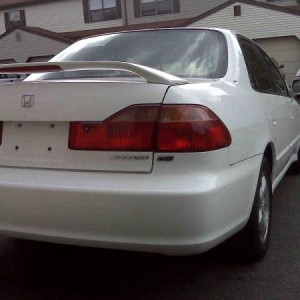Nice job on the DIY, great info.
Now I have to ask, why have 4 6th Gens. I'm not blaming you, because I'll likely get my 3rd one day, but just curious.
Well two of them are just parts cars; I was hoping to find a good gas tank in one of them, but turned out both parts car tanks were rusted out in the same spots. So I had to buy 2 new tanks for Connie and Midnight. Connie ($700 4 years ago) is my daily/winter car and gets over 200km a day, and Midnight ($800, but in really nice shape now that the leaks are fixed) is going to be my girlfriend's daily/winter car, because she doesn't drive much and my commute is a car destroyer. She is also neater than I am, and will keep it nice enough to hold some value if we decide to sell it.
I might fix up the green sedan just to sell it, as I got it for $400 and it just needs a gas tank, brakes and a hood latch. I could probably make a few hundred bucks on it.
The silver coupe parts car ($200) was driven directly into a tree at I'm guessing 50-60 kph, so it'll stay a parts car.
For dailies that need to function, the Accords are perfect and the price was right. And that V6 power sure is nice, too.
I actually just found a black 01 F23 sedan with a blown head gasket for $300....the clear coat on it is still perfect and it's clean, rust free and low mileage. Something like that certified and e-tested would get between 2-3 thousand here, so I might pick up that one too, drop in an engine, and try my luck making some money off of that one too.
There are a lot of these cars around; I've made my money back on the parts cars already by posting part-out ads in the classifieds, and still have almost two whole cars left. I like supplementing my income by flipping cars from time to time; before I travelled so much for work, I used to flip 2-3 cars a year and make a few thousand dollars extra a year.
I bought my house in large part because of the garage and the space to keep extra cars around. 5 years ago it was Hyundai Accents; at one point I had 5 of those laying around, all bought for less than $500.









